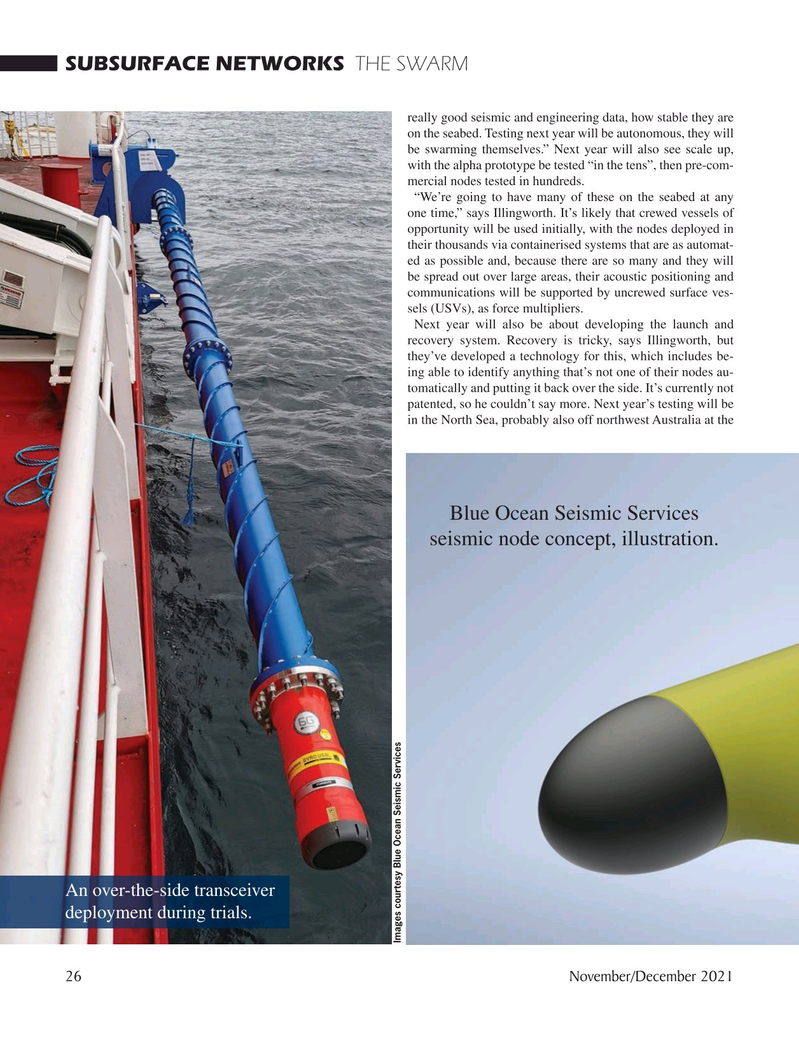
Page 26: of Marine Technology Magazine (November 2021)
Ocean Observation: Gliders, Buoys & Sub-Surface Networks
Read this page in Pdf, Flash or Html5 edition of November 2021 Marine Technology Magazine
SUBSURFACE NETWORKS THE SWARM really good seismic and engineering data, how stable they are on the seabed. Testing next year will be autonomous, they will be swarming themselves.” Next year will also see scale up, with the alpha prototype be tested “in the tens”, then pre-com- mercial nodes tested in hundreds. “We’re going to have many of these on the seabed at any one time,” says Illingworth. It’s likely that crewed vessels of opportunity will be used initially, with the nodes deployed in their thousands via containerised systems that are as automat- ed as possible and, because there are so many and they will be spread out over large areas, their acoustic positioning and communications will be supported by uncrewed surface ves- sels (USVs), as force multipliers.
Next year will also be about developing the launch and recovery system. Recovery is tricky, says Illingworth, but they’ve developed a technology for this, which includes be- ing able to identify anything that’s not one of their nodes au- tomatically and putting it back over the side. It’s currently not patented, so he couldn’t say more. Next year’s testing will be in the North Sea, probably also off northwest Australia at the
Blue Ocean Seismic Services seismic node concept, illustration.
An over-the-side transceiver deployment during trials.
Images courtesy Blue Ocean Seismic Services 26 November/December 2021
MTR #8 (18-33).indd 26 11/22/2021 12:06:17 PM

 25
25

 27
27
